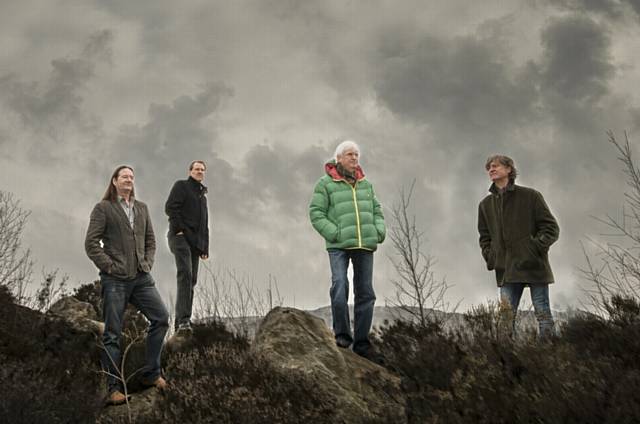Harvest for the world...
Reporter: Simon Smedley
Date published: 28 February 2017
MILLIONS of album sales recorded while signed to major record labels Parlophone, EMI, Polydor and more, it's little wonder John Lees and Barclay James Harvest ought to be described as the true kings of Oldham's distinguished musical heritage.
I have to admit that I didn't appreciate just how huge BJH had been until I began my research for this first part of a two-part Chronicle special feature.
The original band - which since 1998 has been split into founder members John Lees' Barclay James Harvest and Barclay James Harvest featuring Les Holroyd - enjoyed gigantic success for at least two decades from the early 1970s, chiefly in Europe where their prog rock/melodic anthems could attract audiences well into six figures.
Thirty and even 40 years ago BJH were in their pomp, but where did it all start for front-man Lees, Holroyd, Mel Pritchard (who died in 2004) and Stuart "Woolly" Wolstenholme (who died in 2010)?
Lees said humbly: "There was two of us from Derker, one from Chadderton, and myself from Bar Gap Road on Oldham Edge.
"Myself and Woolly met at Oldham Art School, which was next to the Lyceum, and we started off playing blues music - we were all into American blues at the time.
Gigging
"We met Les and Mel, and originally we were called Heart, Soul and the Wickeds - how rubbish was that?
"We then became the Keepers, and from that came Barclay James Harvest.
"We were just gigging at pubs and church halls back then, while there was a place called the Human Jungle which was very popular. We were then going to Liverpool, Huddersfield and all over the North-West."
Once BJH played - and clearly impressed - at John Crowther's birthday do, he offered to manage the band and thanks to his London contacts, success soon followed.
Crowther provided a farmhouse in Diggle for the band. They recorded a single which was played on John Peel's iconic radio show, and pretty much the rest is history.
"We had great success through the 70s and 80s, and up to the mid-90s to be honest," added Lees.
"We were lucky because we had a massive following in England, and at the start our record company (EMI) gave us just a dead straight deal because they knew we had a following.
"They were always going to sign us, and from then on we did do really well.
"We recorded at Abbey Road. What a fantastic place to work at that was. We were using the Beatles' gear when they weren't there and just mixing with lots of high-level people."
BJH did fall out with EMI, later signed with Polydor and then moved into Europe, where Lees' version of the band still enjoy huge popularity today.
Lees said: "We'd run out of places to play over here.
"We were treading water a bit because the show had become so big.
Brutal
"Because the venues over here weren't massive, we were only just breaking even, so we took the whole show to Europe.
"On one tour in Europe we sold 250,000 tickets in just one territory alone, while another highlight was playing about three gigs with ELO in Germany.
"The German audience can be quite brutal. If they perceive that you're not good, they'll go.
"Now I'm not saying ELO weren't good, but after we went on, they did about three numbers and then the audience would leave. Around that time we were doing 5,000-seater venues, so we did get tied up doing the huge tours over there."
Barclay James Harvest played to 250,000 at a free concert at the Reichstag in Berlin, which made the 10pm news in the UK.
There were almost 200,000 at a show at East Berlin's Treptower Park in the late 80s, before by the late 90s, a sabbatical then a "bit of a fallout" led to BJH splitting into the two entities we know today.
NEXT WEEK: What's in store for Barclays James Harvest in the future.
Most Viewed News Stories
- 1Two Oldham students study at both Oxford AND Cambridge
- 2No trams to run between Oldham and Rochdale on Sunday
- 3Head confident that Saddleworth School is still 'heading in the right direction' despite 'Requires...
- 4New football pitch and cricket nets to be built inside glass makers factory
- 5HSBC bank branch in Oldham temporarily closes for a month





